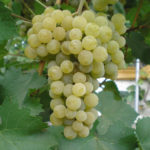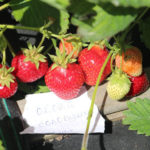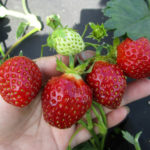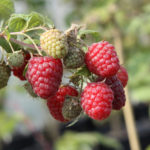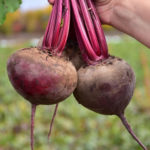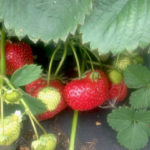Rose Marie Curie
In some reference books, especially the old ones, this plant is described under the name Romantic Dreams. In addition, it should be borne in mind that there is another variety of roses with a very similar name - Marie Curie IYC 2011. But this is a completely different flower that has nothing in common with the considered one.

History of creation
Marie Curie is the result of the painstaking work of French breeders from the Meilland International nursery. The breeder of the variety is Alain Meiland, he got a new variety in 1996 using the two original varieties - Coppélia (seeds) and Allgold (pollen). The nursery registered a new variety a year later, in 1997.
The rose got its name in honor of Marie Curie, an outstanding atomic physicist who worked in France for a long time. The world celebrated the 75th anniversary of nuclear physics that year.
Classification and Description
Marie Curie belongs to the shrub floribunda. Outwardly, it looks like a spreading bush with a height of a little less than a meter, but its width almost always exceeds its height, sometimes reaching one and a half meters. If desired, using pruning, this variety can be formed as a ground cover specimen.
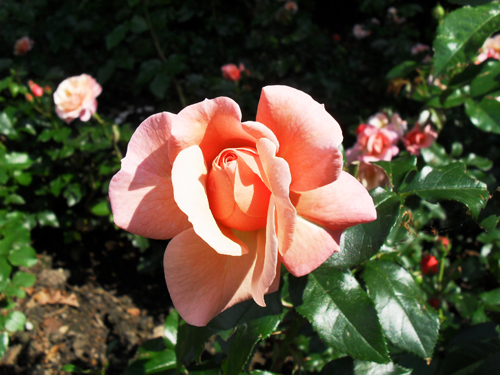
Stems are strong, densely covered with large, light green leaves, leathery and glossy. The number of spines is average.
Characteristics of flowers
Like any rose, the main advantage of the variety is its flowers. Our plant has a classic, slightly elongated shape of buds, which, when blooming, form a cup-shaped, double flower with three or even four dozen wavy petals.
The most remarkable feature of Marie Curie is the color of the flowers. When the bud opens, the outer petals have a delicate, pinkish-cream hue, while the central ones are tinged with a richer, more apricot color. Over time, the apricot shade fades, as if fading, turning into cream. At the same time, the petals farther from the center remain almost pink.
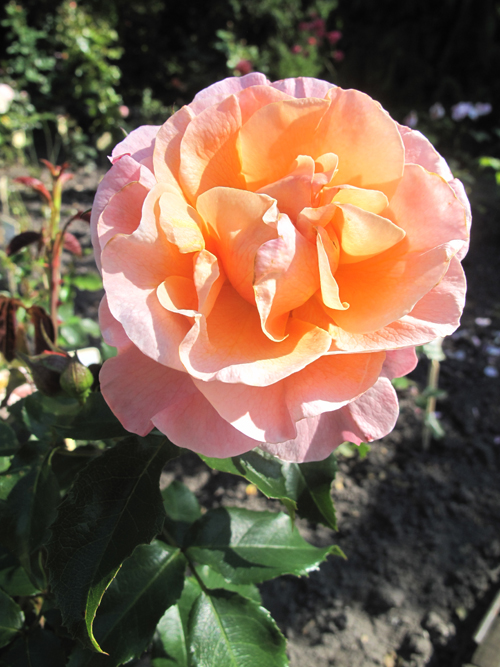
This elusive play of color, its play, imperceptible transitions of tones, according to experts and experts, are the main advantage of the variety.
On the branches, the flowers are arranged in dense brushes, 7-15 pieces each. The diameter of each individual flower is about 8 cm on average. A great advantage is the fact that the blooming Marie Curie exudes a light, but persistent scent with hints of cloves. Sometimes, depending on the weather and soil conditions, a fruity aroma is added to this smell.
Other features
Users report resistance to many diseases, with the exception of powdery mildew and black spot. Therefore, in rainy weather, the bushes must be processed.
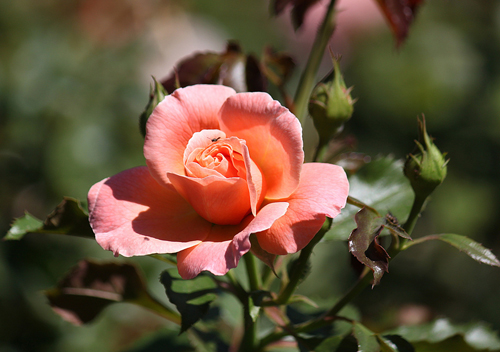
Flowering is one-time, but long and abundant. The flowers are great for cutting, the bouquet looks unusual due to the different color of the petals, as mentioned above.
In landscape design, it is usually used as part of free plantings, as well as for the edge of the border. It can also act as a separate element of the green landscape.
According to the US Department of Agriculture (USDA), the frost resistance of the rose is quite high, without shelter it can withstand zones from the 6th and warmer. In the northern regions, it requires mandatory shelter for the winter and deep pruning.
